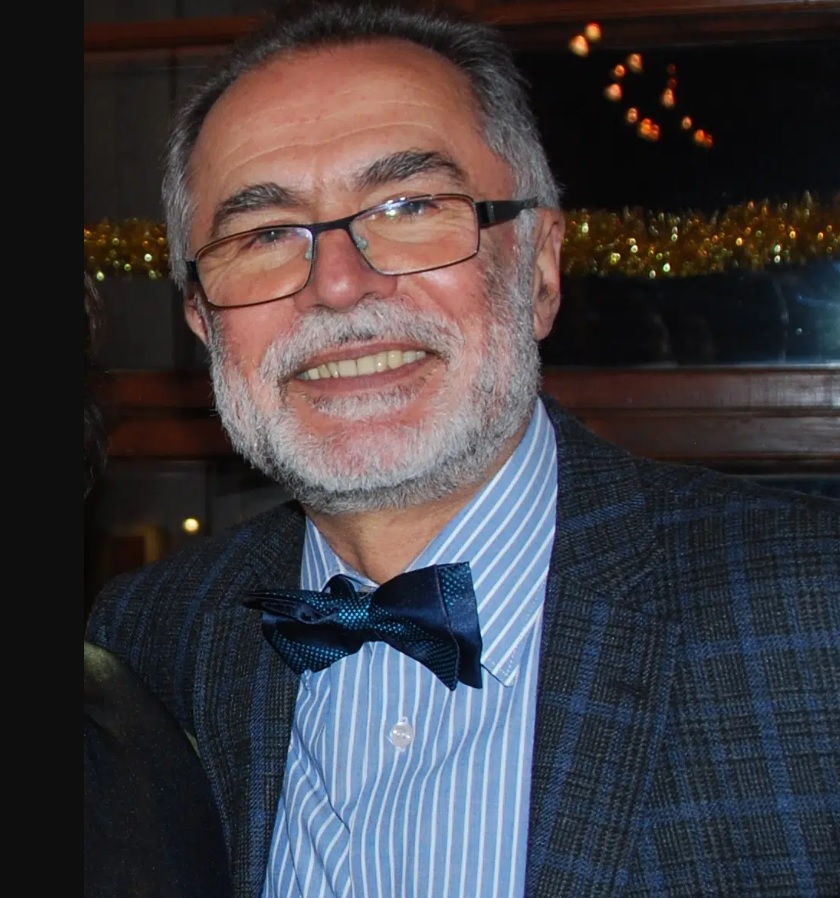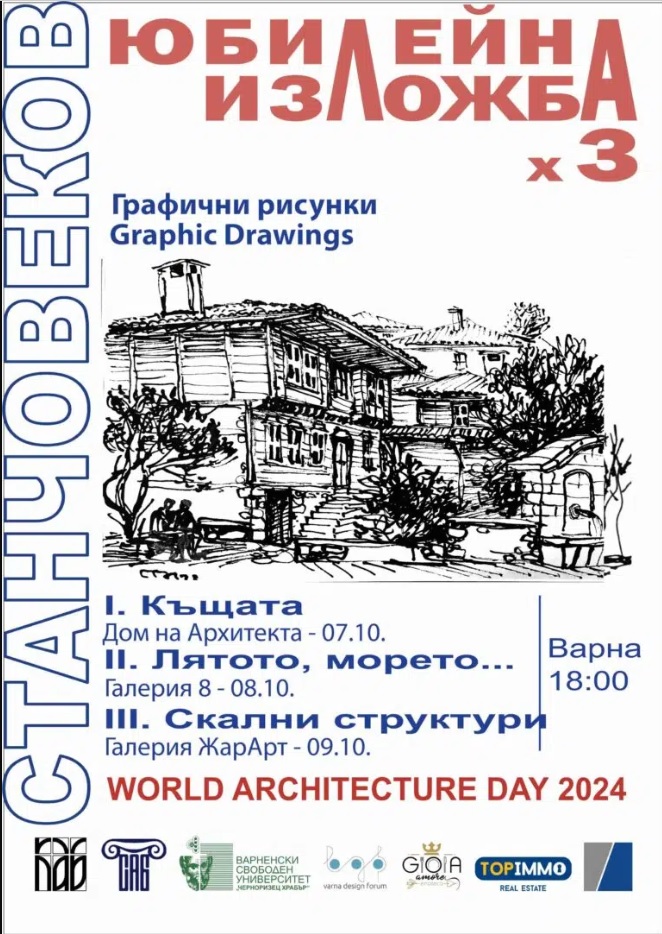Assoc. Prof. Dr. Arch. Stancho Vekov with "Jubilee Exhibition x 3"
06 October 2024
 Assoc. Prof. Dr. Arch. Stancho Vekov - a long-time lecturer at Varna Free University, presents, on the occasion of the World Architecture Day - October 7, 2024, his 75th anniversary, an original "Jubilee Exhibition x 3" - three expositions with drawings on different topics, which will be exhibited in three Varna galleries in three consecutive days. VFU "Chernorizets Hrabar" is a partner of the event.
Assoc. Prof. Dr. Arch. Stancho Vekov - a long-time lecturer at Varna Free University, presents, on the occasion of the World Architecture Day - October 7, 2024, his 75th anniversary, an original "Jubilee Exhibition x 3" - three expositions with drawings on different topics, which will be exhibited in three Varna galleries in three consecutive days. VFU "Chernorizets Hrabar" is a partner of the event.The expositions, entitled The House (from the Bulgarian Renaissance), Summer, The Sea... and Rock Structures, will be opened respectively in the Architect's House on October 7, Gallery 8 on October 8 and Zhar Art Gallery on October 9, at 6 p.m.
The idea for the exhibition comes from the premiere of the book presented by the archaeologist Valery Yotov in July of this year in the Varna City Art Gallery Boris Georgiev - Journey to the East. In it, the young Charles Edouard Jeanneret - at that time the still unknown future famous architect Le Corbusier, traces his travels in 1911 from Vienna to Constantinople, through Hungary, Serbia, Romania and Bulgaria. Strongly impressed by Tarnovo and its houses, he describes them as "... perched on the edges of sharp rocks", "... the eaves of the houses are stuck to each other...", "... the walls are white with black beams of the structure, and the color and texture on the roofs resemble the bark of a tree", ... in the Tarnovo houses, the rooms are plastered with lime and this is so wonderful that I was simply amazed...".
Le Corbusier made a series of valuable drawings and watercolors of houses and interiors with large windows and a 'balcony, a true work of art'. "These observations of the creator, emblematic of the development of modern architecture, are sufficient reason to once again recall the matchless wealth of the Bulgarian traditional wooden architecture from the middle of the XVIII to the end of the XIX century", points out arch. Vekov.
He included in the exhibition his original drawings, made in his youth, as well as during various trips around the country. Mainly characteristic Revival houses from all over the country are covered. Most often he drew houses, streets and service buildings, the specific architecture of which formed a corresponding regional type of house: Northwest type - Sratsimir, Byala, Belogradchik, Varshtec; – Old Mountain type – Veliko Tarnovo, Troyan, Tryavna, Kalofer, Kotel; Black Sea type – Nessebar, Sozopol, etc.
The Bulgarian Revival House is an example of architecture that is adapted to the geography of the terrain, the climatic features of the region and the material resources of the specific place, which in turn determine the architecture and the technology of implementation, mainly a Fachwerk structure with supporting wooden columns and beams, on stonework in the ground floor or brick infill and smooth plaster and/or clapboarding for external and internal walls on the upper floors.
"A special feature of this regional architecture of the Bulgarian traditional house is the eaves of the four-pitched roofs, which give that expressive and plastic silhouette, typical of the Tryavna house. In contrast, in the Northwest or Black Sea house, the roof is shallower or is replaced by a profiled roof cornice, usually filled with smooth white plaster", explains the famous architect.
The exhibition shows several types of residential buildings: one-story, two-story, on flat and/or steep terrain, with a ground floor for various commercial functions - craft workshops, storehouses, cafes, etc., which at once show the great diversity and richness of the architectural palette of the folk master builders and the power of tradition, the result of many centuries of experience.
The House (from the Bulgarian Renaissance) contains 30 drawings with different techniques: Rotring ink (black and nib, felt-tip pen, pen and pencil (black and brown chalk on cardboard or paper). All works, except one - Panorama of Veliko Tarnovo with the bell tower of Kolio Ficheto, are exhibit for the first time.
The reason for Summer, The Sea..., the second exhibition of the jubilee project, is provided by the enthusiastic impressions of Bulgaria shared by Le Corbusier in his book 'Journey to the East'. The exhibition includes drawings inspired by the Bulgarian nature, made by arch. Vekov during a summer trip with friends along the Southern Black Sea coast in 1977. Landscapes alternate from Nessebar, with its picturesque harbors, boats and flat seashore, to Sozopol, with its numerous rocky bays and then still intact natural environment.
A total of 12 drawings are presented. They capture the specific beauty of the coast, where the sea, the rocky coast and the sun create a unique feeling of spaciousness and freedom. A technique with which the author experiments is applied - straight from the ink tube (Rotring/black), using the tip of the tube itself as a pen. In this way, a relatively uninterrupted rendering process and the possibility of quickly perceiving and applying the selected motif or object to the sheet are provided. A thin chrome paper suitable for the consistency of the China ink was used.
In the last, third exhibition of the jubilee project Rock Structures, the author continues the theme of nature touched upon in the second exhibition.
In his Jubilee Exhibition x 3, arch. Stancho Vekov shared some of the artistic quests in his creative path, in parallel with Le Corbusier's messages to the guild: "Watch, observe, see, imagine, invent, create!"; "The key is to see!"; "Seeing is knowing!".


